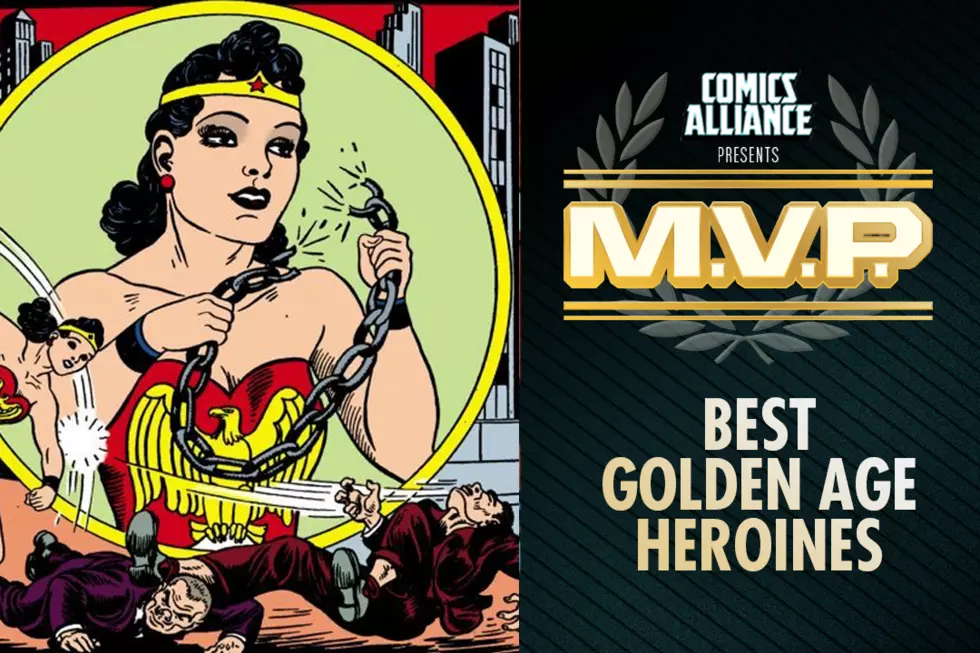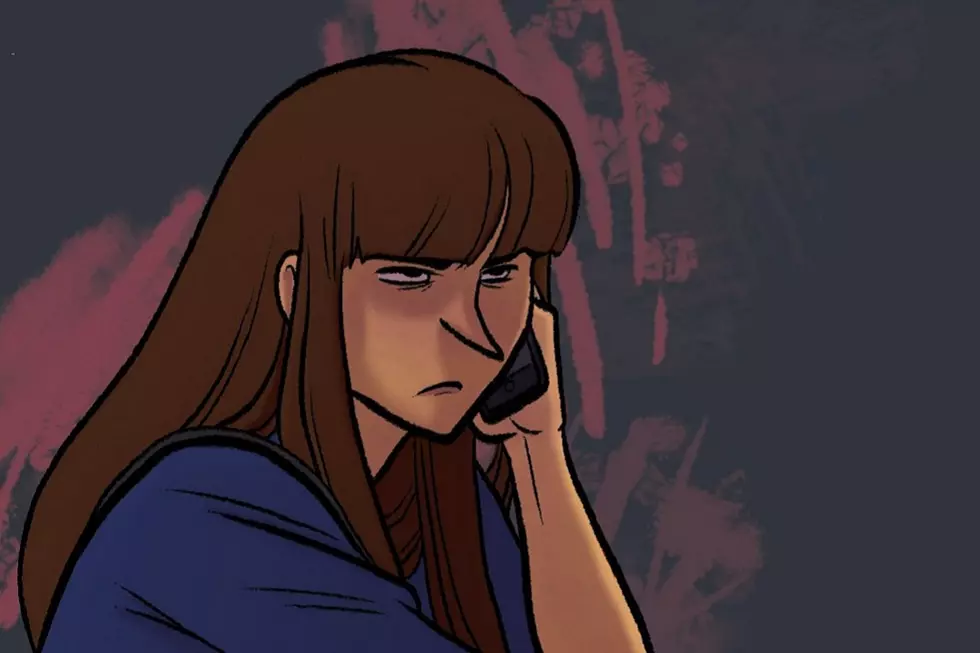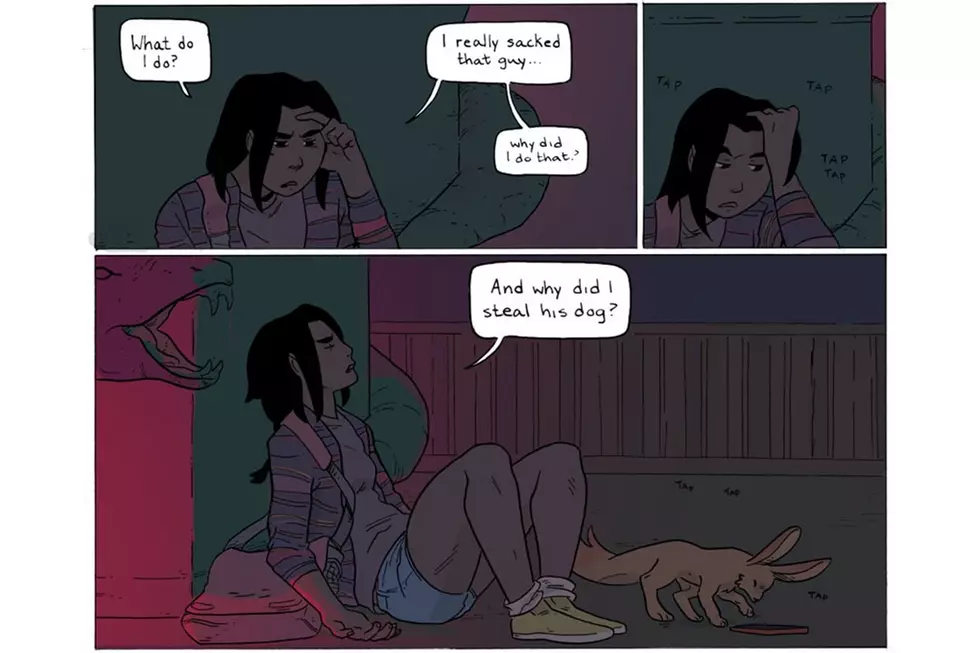
Hire This Woman: Cartoonist Maria Fröhlich
In the overwhelmingly male comic book industry, it has been a challenge for some editors and readers to see the ever growing number of talented women currently trying to make a name for themselves. With that in mind, ComicsAlliance offers Hire This Woman, a recurring feature designed for comics readers as well as editors and other professionals, where we shine the spotlight on a female comics pro on the ascendance. Some of these women will be at the very beginning of their careers, while others will be more experienced but not yet “household names.”
Maria Fröhlich is a cartoonist based in Sweden who writes, draws, colors, and letters most of her work. Her comics includes strips for fantasy and sci-fi magazine Utopi and a story in the Swedish adventure comic The Phantom.
ComicsAlliance: What's your preferred form of creative output?
Maria Fröhlich: Drawing is my life’s big passion but writing is a close second -- or rather, the two combined in storytelling. It’s hard to separate the two in a medium like comics.
CA: Do you work on paper or digitally?
MF: I work on both, depending on what effect I’m trying to achieve with the art. At the moment I’m working digitally, and quite missing inking on paper. But the comic I’m doing is a sci-fi adventure and I thought the digital style would add to the futuristic feeling of the story’s atmosphere.
CA: What’s your background/training?
MF: I’ve studied classical art since I was fifteen and attended several comic and cartooning schools for the better part of four years. I started out at Gävle university’s program in comics and sequential storytelling and finished at HDK with a master's course in comics and advanced storytelling.
CA: How would you describe your creative style?
MF: I don’t know, really. I’m influenced by everything from American and French mainstream comics to Japanese action adventure and Swedish autobiographical graphic novels. How about “inbetweeny?”
CA: What projects have you worked on in the past?
MF: I got my first paid comic job when I was fourteen and published a humor strip in a youth magazine after winning a contest. During college I was working as an illustrator, humor strip cartoonist and made one-shot comics for the sci-fi and fantasy magazine Utopi.
CA: What are you currently working on?
MF: Since I finished school I’ve been working for The Phantom (Fantomen), an adventure comic published in Sweden and in Norway, working on an ongoing series called “Tales from Miraclecity” (Sagor från Mirakelstaden).
CA: Approximately how long does it take you to produce a 20-page issue?
MF: It depends; I can draw and ink a page on paper in one average work day. Coloring and lettering a page usually takes one to two work days. I work faster digitally and have, when demanded, done a full page in a day -- but then we’re talking a 14-hour work day and I usually try to avoid that kind of stressful work schedule.
CA: What is your dream project?
MF: To create a comic about something real, telling stories that really mean something. I love the sci-fi and fantasy genres and I like them even better when they contain some thought provoking themes or concepts within the story. I’d like to create something a bit more challenging like that. Also I’d love to explore the art aspect of comics more, find new storytelling techniques and push the boundaries of the medium.
CA: Who are some comic creators that inspire you?
MF: Oh, that would be a long list, but some of them are: Masashi Kishimot, Moebius, Alan Davis, Naoki Urasawa, Dwayne McDuffie, Sofia Olsson, Neil Gaiman, Eiichiro Oda, Hiyama Miyazaki, Kate Beaton and Hiroaki Samura.
CA: What are some comics that have inspired you either growing up or as an adult?
MF: I started reading comics early thanks to my mother, who introduced me to comics like The Adventures of Asterix, Prince Valiant and Batman. I got in trouble in school when I was seven because I snuck out from a math lesson to read comics in the hall and was caught red-handed by the janitor. I think I spent like 15 minutes trying to talk my way out of that one, with sharp arguments like “But is math really that important? Maybe reading comics is just more useful?” Needless to say they didn’t bite and I got my first detention.
But the big push that made me go from consumer to creator came from seeing X-Men, the animated series, when I was 12. After watching two episodes of that show it was all over, no other profession on earth could possibly compete with being a comic creator and I’ve been working for that goal ever sense.
CA: What’s your ideal professional environment?
MF: I prefer working from a studio with other creators. I find that besides the good company, the creative environment and the opportunity for feedback develops me as a comic creator.
CA: What do you most want our readers and industry professionals to know about your work?
MF: That it’s bloody good! And made with heart.
CA: How can editors and readers keep up with your work and find your contact information?
MF: Primarily through my tumblr and twitter. My tumblr contains links to my contact information and my online portfolio.
If there is a woman you’d like to recommend or if you’d like to be included in a future installment of this feature, drop us a line at comicsalliance-at-gmail-dot-com with "Hire This Woman" in the subject line.
More From ComicsAlliance
![When Everything Is Pink, Nothing Is Pink: Sarah Stern On Color And Creativity [Interview]](http://townsquare.media/site/622/files/2017/03/Cindersong-feat.jpg?w=980&q=75)








